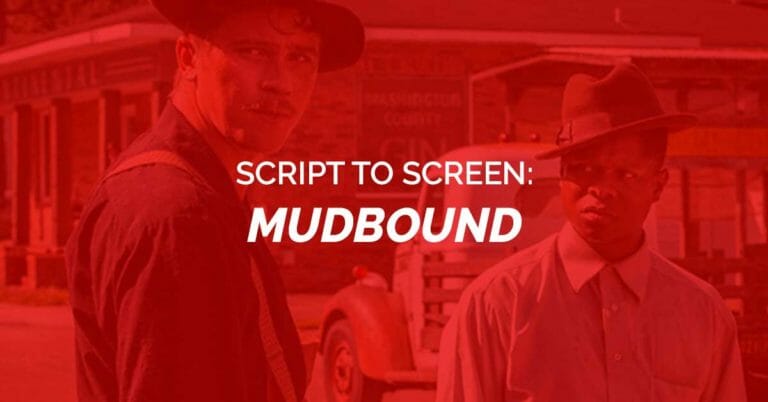By Christopher Osterndorf · July 29, 2018

Dee Rees’s Mudbound earned a ton of critical acclaim and went a long way to legitimizing Netflix as a platform for serious movies when it was released in 2017. The story of two families, one black and one white, farming the same land and struggling to make their way in post-war America, the film made a splash at Sundance and wound up riding a wave of acclaim all the way to four Oscar nods.
One of those nods was for Best Adapted Screenplay. Rees, who became the first African American woman nominated in the category, shared the honor with Virgil Williams, whom she adapted Mudbound with from Hillary Jordan’s novel of the same name. Together, Rees and Williams crafted a script that was at once a bold and evocative period piece and a comment on complex racial dynamics which still linger today. The following scene is a testament to how they did it, and to what makes Mudbound such a good film in general.
As Jamie walks out of the store at the beginning of this scene, something startles him. In the script, Rees and Williams indicate that, “A passing car BACKFIRES.” They go on to write that, “Jamie hits the ground and covers his head.” We know right away that this is significant not because Jamie is merely startled or because he’s scared of loud noises, but because his actions reflect the psyche of a man who has just returned from the war.
By making this sure this action stands out in the script, Rees and Williams also pave the way for it to stand out in the sound design. Though they’ve told us in other ways that Jamie has been affected by the war, the use of sound is another tool they employ to really drive the point home. The fact that when Jamie hears the car backfire it sounds like a gunshot is no accident. The sound design tells the audience that he is suffering from PTSD, and the way the script illustrates this without any formal explanation is what makes the moment feel real and organic for his character.
As Jamie gets up from the ground, we see that Ronsel offers him a helping hand. At first, Jamie ignores him, and we think that he may be playing into the social dynamics of the time period (more on that later.) But as Jamie gets up, we see that he was still startled by the sound he just heard. The scene clicks into place when Ronsel tries to hand him his hat, and Jamie sees how bad his hand is shaking.
Rees and Williams write that this gesture opens up “an instant kinship” between the two men. Jamie recognizes a trait that’s familiar in Ronsel. His shaking hand signifies that he’s suffering in a similar way. Without ever even talking about it, the two men know they share a bond.
This interaction also presents a good example of how filmmakers make little differences from script to screen. In the movie, Ronsel hands Jamie his hat, but in the screenplay, Jamie and Ronsel notice each of their hands shake as Jamie is picking up a bottle of bourbon.
Jamie and Ronsel’s military service hangs over this whole scene, and other than a few whispers from the townsfolk, it’s never discussed in dialogue. But there’s another element hanging over this scene that’s never discussed either: the racial tension inherent to the Mississippi setting.
As soon as Ronsel walks up to Jamie, this becomes apparent. The townsfolk are skeptical right away of a black man approaching a white man—even if it’s just to help him. When Jamie takes it a step further and extends his hand, Ronsel himself is surprised. But the real shock to the onlookers comes when Jamie offers to give Ronsel a ride. Ronsel accepts though he’s shocked himself. The scene ends with Rees and Williams writing that, “Both of them are aware of the men still watching from the porch.”
Once again, this scene demonstrates how much you can do without dialogue. Neither character has to explicitly discuss how racist their community is for us to understand it. On top of which, this is a much more naturalistic way to establish period and setting than to come right out and say it.
 Chris Osterndorf is a freelance writer from Milwaukee who studied cinema at DePaul University in Chicago. When he’s not watching movies, he’s writing them or writing about them. He’s especially partial to romantic comedies and crime films. He currently lives in Los Angeles.
Chris Osterndorf is a freelance writer from Milwaukee who studied cinema at DePaul University in Chicago. When he’s not watching movies, he’s writing them or writing about them. He’s especially partial to romantic comedies and crime films. He currently lives in Los Angeles.
For all the latest from The Script Lab, be sure to follow us on Twitter, Facebook, and Instagram.